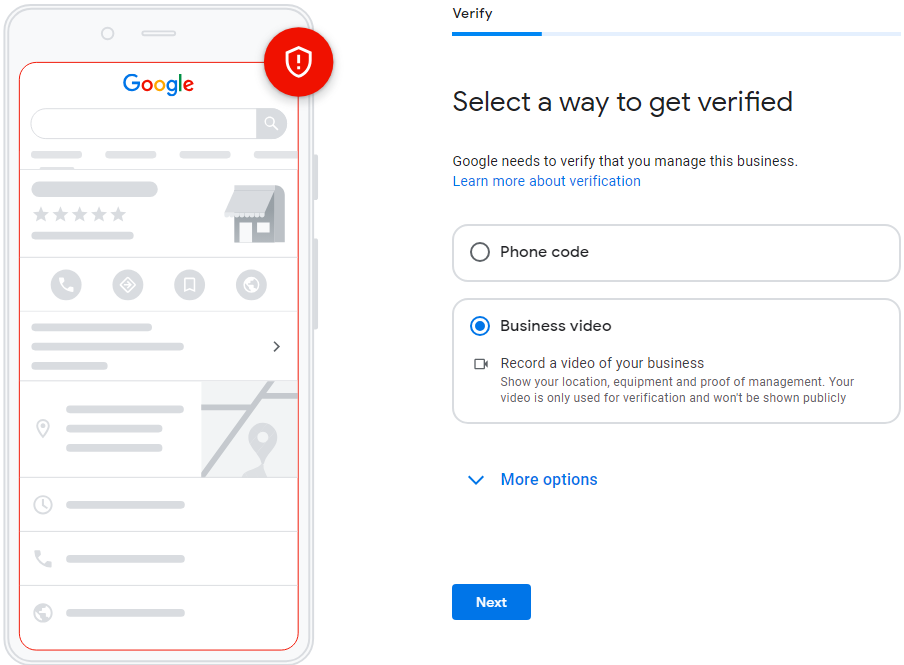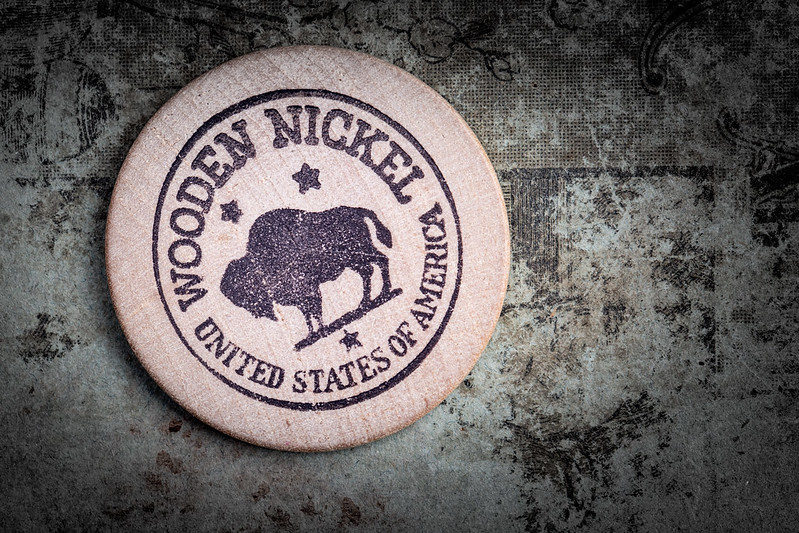I’m not saying you should do this, but if for whatever reason you need to fudge and fib your way through the video-verification of your Google Business Profile page, it’s not that hard to do. First tested in 2016, in recent months that verification option has gone from relatively rare to somewhat common to non-optional in most cases. Whether you’re trying to add a business or location to Maps for the first time, or you just need to re-verify your GBP page, you’re likely to run into video-verification (let’s call it VV) sooner or later, and it may not be optional.

The inherent problem is that Google is forcing you into a process filled with human error, run by people (however well-intentioned) who know little or nothing about your business. Google has invited them into the skivvies of your business, and after a couple of minutes expects them to be qualified judges as to whether your business should be on Maps. I understand why Google does VV, and actually think it’s a good step overall (given that it’s somewhat tougher than postcard verification). I’m just saying there are problems with it, and I’m still not sure it will last.
You may be at the receiving end of some of those problems. I assume you’re not a spam lord, and that you have a legitimate business that, for whatever reasons, makes it tough to complete the VV.
A couple of businesses I know well needed to use a little creative license to get through the video-verification. With businesses that had been up and running and making customers happy for many years, they had to re-verify by video, and knew they’d run into sticking points. They also knew that the Google reps wouldn’t have the time or interest to hear all of their particulars or to walk a mile in their moccasins. In other words, these business owners just had to get through the video-verifications, one way or the other. Their reasons were reasonable, at least by my lights.
You may have your reasons, too. You’re a better judge of your situation than I am, and you can’t be a worse judge of your business’s merits than Google is. So if you suspect or know you’ll run into issues with video-verification, this post is for you.
Before we get bogged down, please take a few minutes to read this excellent, brief summary of GBP video-verification by Colan Nielsen. If you can meet Google’s specifications exactly, without taking any liberties, then you should do so. Go by the book if you can.
If for whatever reason(s) you can’t go 100% by the book, then you need to know where the loopholes are, so you and your GBP page can squeeze through. What are the loopholes in the Google Business Profile video-verification process?
- Human error. It’s a process with a person at the other end, rather than the mechanical process of verifying by postcard. The person who watches your video needs to make a call as to whether your signage looks passable, whether your location looks like you work, or whether your poker face has any tells.
- Time. Google reps need to get through each of these deals quickly, because every rep has probably 53 more to get through before clocking out.
- Continuity. If you need to take a couple of whacks at the verification, or if you have several of them to do, there’s a good chance you’ll get different Google reps each time.
- Knowledge, or lack thereof, about certain industries or business models. Google reps have seen enough dental clinics to know what a legit one looks like, but how many radon mitigation system installers have they verified? They know what the signage for a preschool should look like, but do they have clear standards as to what signage a dumpster-rental service should have?
- Familiarity with YOUR building. They don’t know your place from a funeral parlor, and don’t know what’s supposed to be where, who’s supposed to be where, and how the mise-en-scène might be a little different today.
- Street View data. Google reps who need to size up your address can’t necessarily refer to what shows up on Street View, because most of that photography is years old and ages faster than an air-traffic controller.
- Excessive strictness. If the video-verification process is too tough, businesses won’t be able or willing to do it, and will look for workarounds or pay less attention to Google and be less likely to shell out for Ads. Meanwhile, Google’s data and search results will go to seed, because Google will have frozen out new businesses, new locations of existing businesses, and businesses have been on the map forever and are otherwise good search results.
- The availability of other verification methods as backups. If verifying by video doesn’t work out, at some point you’ll probably get the option of verifying by other means (like by phone or postcard). That second choice may have been your first choice, because it may be easier for you to pull off.
- Personal incentives. Is the Google rep rewarded for getting every verification right? Is the Google rep dinged for verifying a business that isn’t 100% compliant with the quality guidelines? No and no. More to the point: who at Google determines and cares whether this or that business is squeaky-clean compliant? Yeah, I have no idea, either. I doubt anybody at Google is getting fired because the Lids R’ Us dispensary isn’t really inside Taco Bell.
Those may be the squishier spots of VV, but keep in mind that VV is one layer of verification, and is not Google’s only means of quality-control. Even if Google’s video-verification process is haphazard, your GBP page might run into trouble in other areas Google scrutinizes.
What are the ways one COULD get a business or location that’s not 100% guidelines-compliant through Google’s video verification? (I’m not suggesting that you do any of these things. Also, when I say “you” I mean “someone in general.”)
- You don’t need to verify immediately, as soon as you’re prompted to: Google gives you the option to do it later. Give yourself time to figure out your flight path and clear the runway.
- If possible, update the address on your site and at least on the the important citation sources before verifying your GBP page.
- It’s probably easy to swap out or overlay your existing indoor or outdoor signage (unless maybe you’ve got a neon sign or you’re at the Golden Arches).
- Building directories are updated all the time. It’s possible that nobody cares whether you stick your placard onto the directory for 10 minutes. Or if there’s an attendant at the front desk, you can probably just explain what you’re trying to do.
- Google doesn’t know which truck or van is yours, or how many vehicles you’ve got. Someone you work with or whom you know outside of work probably has a truck or van that you can put a temporary decal or wrap on.
- If you’ve got 2 or more businesses / GBP pages that use the same address, but only one of them is shown on the signage and elsewhere in the physical world, spread the VVs a couple of weeks apart. By the time you do the 2nd one either you’ll get a different Google rep, or the same Google rep would have done 467 other verifications and won’t have strong deja-vu. (Of course, in the meantime you do whatever you need to do with the signage and other props.)
- If you’ve got 2 businesses and you’ve already verified one of the pages, tell your staff to wear different uniforms, hats, or shirts to reflect the branding of the 2nd page.
- If your video doesn’t pass muster and you can’t think of what you should do differently, try again, maybe a few days after you’re given the option to redo it. There’s a good chance you’ll get a different Google rep this time, possibly one who’s not the same stickler for details.
If Google really wants to clean up the Maps results, it should do one of two things: (1) tell business owners that the more types of verification they complete, the better they’ll rank, or (2) reward businesses with a prominently-displayed badge that shows up in the search results for each type of verification the business completes (phone, postcard, video, and maybe a document scan). Google can gamify it, as Google has gamified the “Local Guides” program. Businesses that only squeak through one type of verification may still show up, but they’d be at a real and perceived disadvantage to businesses that have aced every test.
In the meantime, it’s just good to know how you might slip one past the goalie, even if you don’t need to or plan to. It’s also good to know how competitors might be doing so. Don’t spam the map, but don’t assume Google’s new SOPs are automatically fair, reasonable, or take businesses like yours into account. Google has a long history of “to make an omelet you need to break a few eggs” reasoning behind its policy changes. Just use good judgment, OK?
—
What’s been your experience with verifying by video?
Is there something you needed to fudge, or did you just consider it?
Any loopholes you’d want me, business owners, or Google to know about? (I won’t ask how you know.)
Leave a comment!



Recent Comments